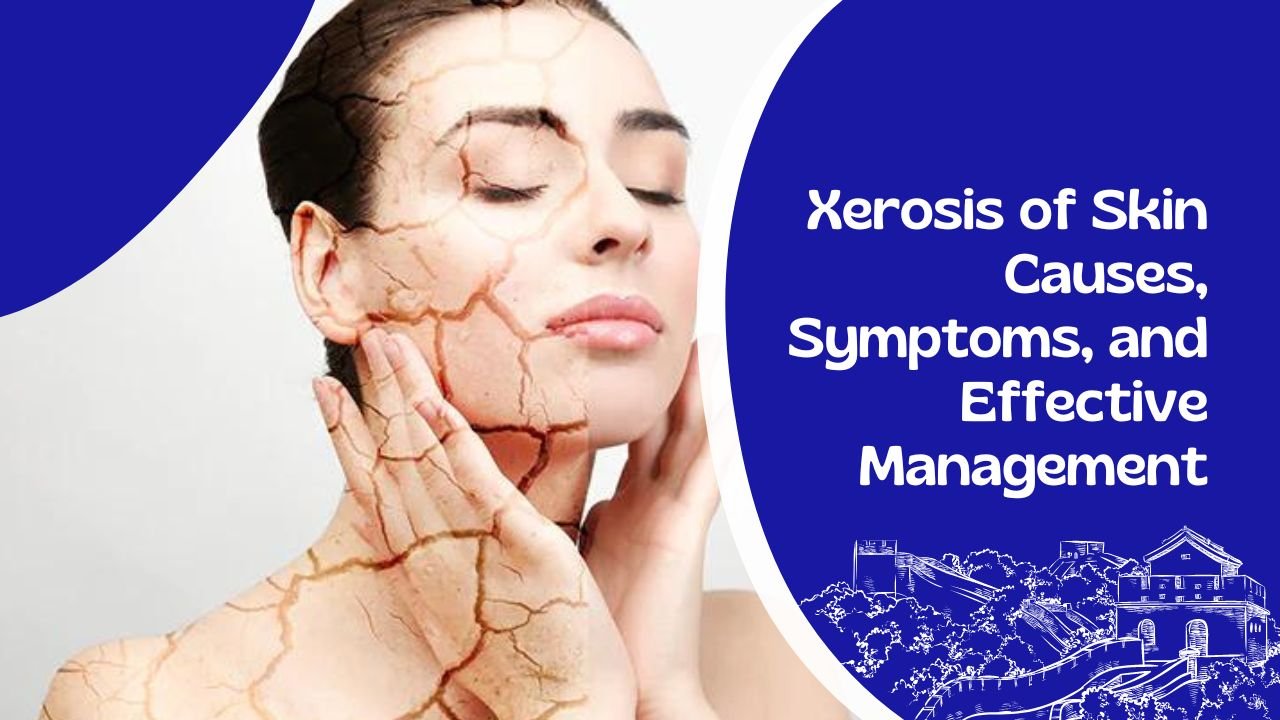Xerosis of skin, commonly known as dry skin, is a prevalent dermatological condition that affects a substantial number of individuals worldwide. It is characterized by rough, itchy, and flaky skin, often leading to discomfort and irritation. Although it may seem like a minor issue, untreated xerosis can cause significant problems, impacting one’s quality of life. In this article, we will delve into the causes, symptoms, and effective management techniques to combat xerosis of skin and restore a healthy, hydrated complexion.
Causes of Xerosis of Skin:

Several factors contribute to the development of xerosis of skin:
- Low Humidity: Dry and cold weather can deplete the skin’s natural moisture, leading to dryness and flaking.
- Hot Showers: Prolonged exposure to hot water during baths or showers can strip the skin of its protective oils, resulting in dryness.
- Harsh Soaps and Cleansers: Using harsh soaps and cleansers that contain chemicals can disrupt the skin’s natural barrier, leading to dryness and irritation.
- Age: As we age, the skin’s ability to retain moisture decreases, making older individuals more prone to xerosis.
- Underlying Medical Conditions: Xerosis can be associated with certain medical conditions such as eczema, psoriasis, and thyroid disorders.
Symptoms of Xerosis of Skin:
Identifying the symptoms of xerosis is crucial for timely intervention and management. Common signs include:
- Dryness: The skin appears and feels dry, rough, and flaky.
- Itching: Persistent itching is a common symptom, which may worsen in dry conditions.
- Redness and Irritation: The affected areas may exhibit redness and irritation due to the lack of moisture.
- Cracks and Fissures: In severe cases, the skin may develop cracks and fissures, causing pain and discomfort.
- Increased Sensitivity: Dry skin is more susceptible to irritation and can become sensitive to various skincare products.
Effective Management of Xerosis of Skin:

Fortunately, xerosis of skin can be managed with simple and effective techniques:
- Hydration: Drink plenty of water to keep your body and skin well-hydrated from within.
- Moisturize Regularly: Apply a suitable moisturizer after bathing and throughout the day to lock in moisture.
- Avoid Hot Water: Opt for lukewarm water during baths and showers to prevent stripping the skin’s natural oils.
- Gentle Cleansing: Use mild, fragrance-free cleansers to cleanse your skin without causing further dryness.
- Humidify Your Environment: Use a humidifier to add moisture to the air, especially during dry weather conditions.
- Protective Clothing: Wear soft and breathable fabrics to reduce friction and irritation on the skin.
- Limit Exfoliation: Reduce the frequency of exfoliation, as it can worsen dryness.
When to Seek Medical Attention:
If home management techniques do not improve xerosis symptoms or if you experience severe skin dryness, itching, or inflammation, it is crucial to consult a dermatologist. They can identify any underlying conditions and provide personalized treatment options.
Conclusion:
Xerosis of skin, or dry skin, is a common condition that can cause discomfort and irritation. However, with proper care and effective management techniques, it is manageable and preventable. By hydrating, moisturizing, and protecting your skin, you can restore its natural moisture balance and achieve a healthy, radiant complexion. If you experience persistent dryness or severe symptoms, consult a dermatologist for a comprehensive evaluation and appropriate treatment. Remember, healthy skin contributes to overall well-being, and taking care of your skin is essential for a happy and confident you.
















